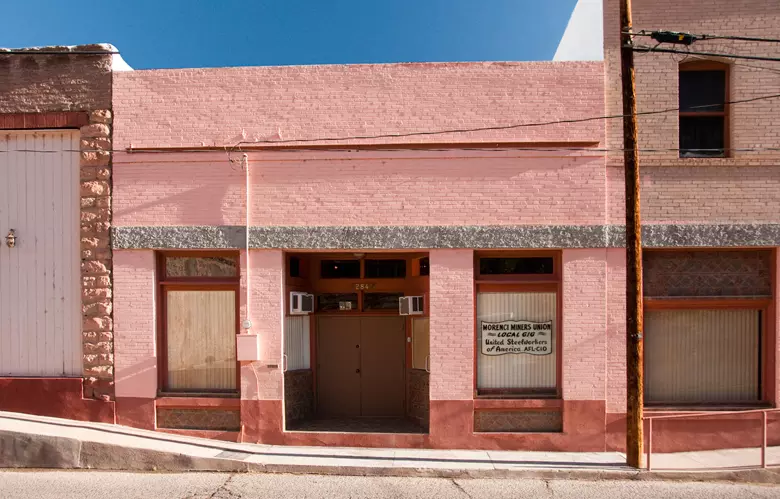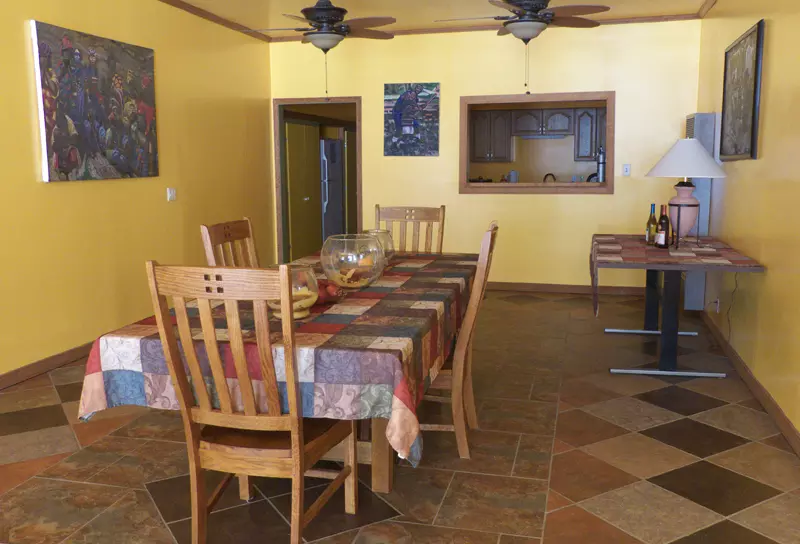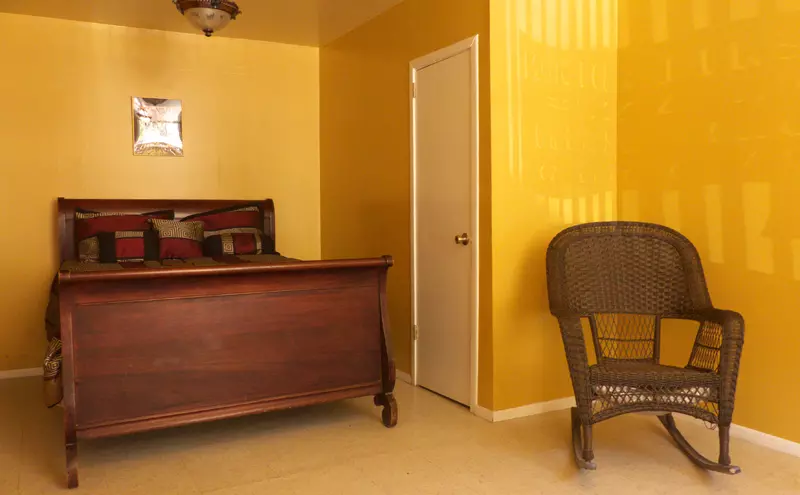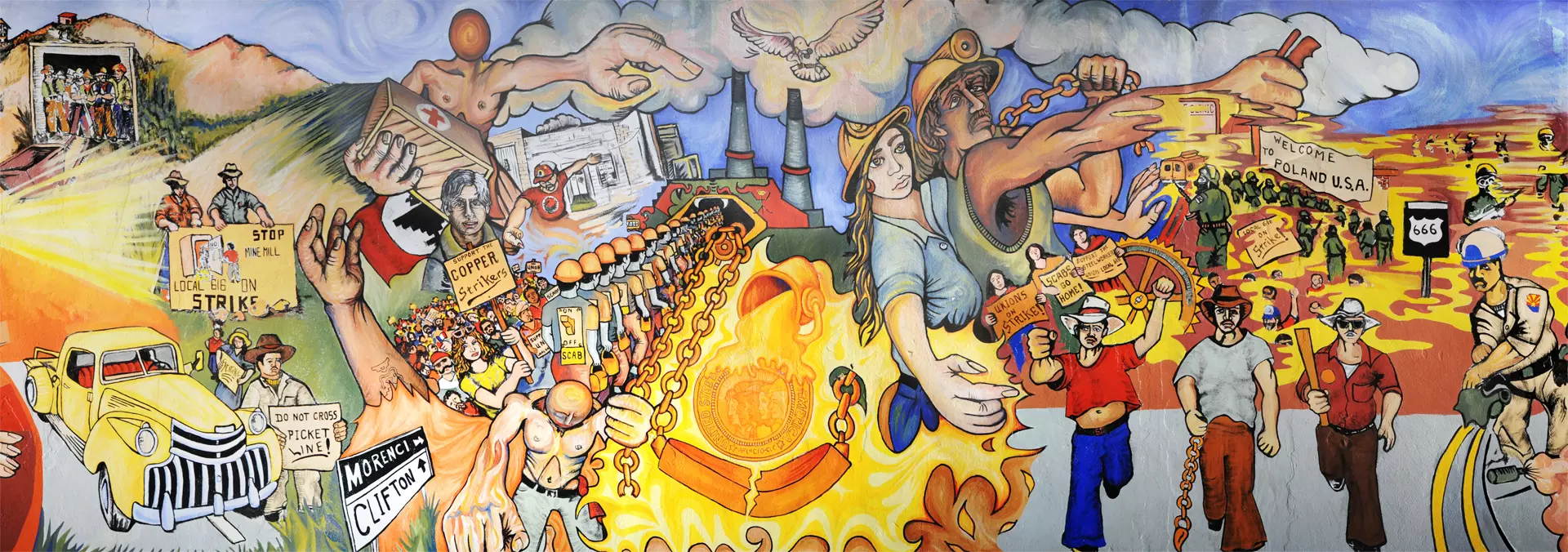Listed on the National Register of Historic Places, the Union Hall is a fine example of Territorial style architecture. Built in 1916 — significantly, just after the successful strike of 1915-16 — the hall is home to the famous mural commemorating 1983-1986 United Steelworkers strike. Executed in dazzling color, the mural occupies the union hall's north wall and measures 40 feet wide by 10 feet tall.
The mural includes a portrait of the legendary labor activist Cesar Chavez, who came to Clifton on November 25, 1983, to show his support for the miners. It's one of the few documented places where Cesar Chavez is known to have spoken on behalf of a union other than this own.
In the aftermath of the strike, Angel Rodriquez, president of Morenci Miners Local 616 of the United Steelworkers, was approached by two folk artists, David Tineo (from Tucson) and Tomas Bandariés (from Paris), who had come to Clifton with the conviction that the Phelps Dodge strike carried a lesson for the world.
They asked if they could paint the union story. Rodriguez liked the artists' proposal, so he gave them the long, inside north wall of the union hall. He felt a mural would provide a counterpoint to the open pit "landscape" paintings on the opposite wall, works donated by a Navajo painter during more peaceful times. For twelve days and nights, the artists worked to record the dying union's life ...
The mural's narrative began at the entrance of the hall with a trio of young, multiethnic union members signifying solidarity. Arms out front like superheroes, they flew out of a corner of the past filled with steam trains and old cars over the hills of Morenci. Ahead, the smelter steamed and snarled, part furnace, part dragon, as a line of scabs with "on" switches embedded in their backs was conveyed inexorably toward the fires. Beyond the smelter, an unattached arm — perhaps the amputated arm of one of the mine's accident victimes — seemed to grow from the ground near a crucible that spilled molten copper, forging the United Steelworkers insignia. Further on, a team of muscle-bound workers pulled a gear that shattered the copper collar, symbol of mining company power over workers. In all, from left to right, the mural recorded a journey from harsh past, to hopeful future, to dismal end. The most vivid testaments to union glory were undermined by images of defeat: a National Guard helicopter circling in the sky, state troopers igniting tear gas canisters, union members on the highway sinking and disappearing into the smoke. The sequence ended with the image of a grieving angel hovering over everything, head buried in her hands.

Clifton Union Hall
Retired Dentist Jeff Gaskin bought the former Union Hall about 15 years ago, carefully renovating it to serve as a boarding house, gallery for his impressive collection of African art, and soon-to-be bed-and-breakfast.
Frank "Pancho" Gonzales, a retired mine foreman and brilliant raconteur, offers guided tours of the Union Hall and stories of the area's past for the modest sum of $10.00. Pancho can also guide visitors to the grave of the famous curandera, Santa Teresita de Cabora.

Union Hall Dining Room

Union Hall Bedroom
The Union Hall
284 Chase Creek Street
Rooms:
$60/night
Lawrence "Jeff" Gaskin, 520-508-3321
